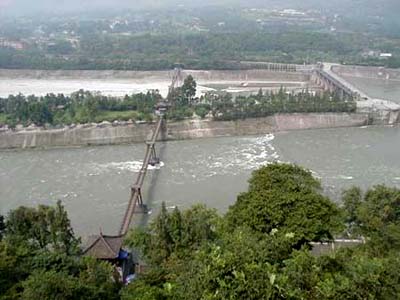A plan to build a series of hydroelectric power stations within the Dujiangyan, the world's oldest irrigation system and World Heritage site, in Sichuan Province, has sparked controversy among experts.
A report by the Dujiangyan administration bureau on the development of the Botiao River within the Dujiangyan, said up to 10 plants would be built along the 44-km-long river.
However, Chen Qingheng, a researcher with the Chengdu ecological research center under the Chinese Academy of Sciences, said: "It is irrational to build such stations as they will destroy the natural ecology along the river.
"Moreover, they will affect the local drinking water."
The Botiao River, which is one of four tributaries of the Min River, is the main source of drinking water for people living in Chengdu.
"We can tackle water pollution there by other means, we don't have to build power plants. The hydroelectric project will actually pose new threats to water quality as it will destroy the ecological environment," Chen said.
Along with the threats to water quality, experts have said the project will lead to an increase in the river's water level and that will pose an even greater threat to nearby farms.
Zhao Wenqian, deputy director of the Sichuan provincial academy of water resources, said: "The hydroelectric project will require a number of dams to be built and they will raise the water level of the river."
The Botiao will become a hanging river, with its bed higher than the surrounding environment, Zhao said.
"If the dams are breached, every farm and village in the area will be at risk," he said.
Sources with the Dujiangyan administration bureau said the hydroelectric plants, which will cost about 1 billion yuan (US$135 million) to build, will have a combined capacity of more than 100,000 kw.
A bureau official, who asked not to be named, told China Daily yesterday that an environmental impact assessment had been ongoing since June 2006.
Nie Xiuxiang, deputy director of the Sichuan Science and Technology Association, said: "The assessment should be conducted not only by the water resource authority, but also environmental protection, forestry and land resource departments, and other scientific research institutions to ensure comprehensive analysis."
Nie, together with seven other deputies to the local political consultative committee, submitted a proposal early last year, calling for "a rational approach to the hydroelectric project".
(China Daily November 2, 2007)






